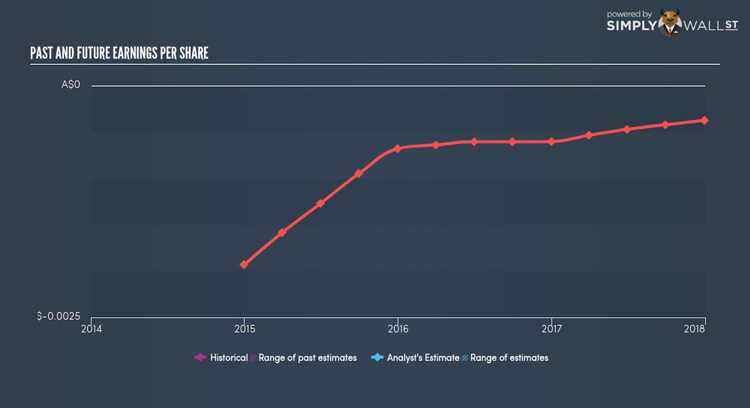How Should Investors Feel About Cullen Resources Limited’s (ASX:CUL) CEO Pay?

Chris Ringrose is the CEO of Cullen Resources Limited (ASX:CUL), which has recently grown to a market capitalization of AU$5.20M. Recognizing whether CEO incentives are aligned with shareholders is a crucial part of investing. Incentives can be in the form of compensation, which should always be structured in a way that promotes value-creation to shareholders. I will break down Ringrose’s pay and compare this to the company’s performance over the same period, as well as measure it against other Australian CEOs leading companies of similar size and profitability. See our latest analysis for Cullen Resources
What has been the trend in CUL’s earnings?
Profitability of a company is a strong indication of CUL’s ability to generate returns on shareholders’ funds through corporate activities. In this exercise, I will use profits as a proxy for Ringrose’s performance. In the past year, CUL delivered negative earnings of -AU$816.42K . But this is an improvement on prior year’s loss of -AU$1.07M, which may signal a turnaround since CUL has been loss-making for the past five years, on average, with an EPS of -AU$0.0019. Given earnings are moving the right way, CEO pay should echo Ringrose’s value creation for shareholders. Over the same period Ringrose’s total remuneration dropped by a trivial -2.73%, to AU$292.47K. Moreover, Ringrose’s pay is also made up of 75.77% non-cash elements, which means that fluxes in CUL’s share price can move the actual level of what the CEO actually collects at the end of the year.
Is CUL’s CEO overpaid relative to the market?
Despite the fact that one size does not fit all, as compensation should be tailored to the specific company and market, we can determine a high-level benchmark to see if CUL deviates substantially from its peers. This exercise can help shareholders ask the right question about Ringrose’s incentive alignment. Generally, an Australian small-cap has a value of $140M, produces earnings of $10M, and remunerates its CEO circa $500,000 annually. Typically I would look at market cap and earnings as a proxy for performance, however, CUL’s negative earnings reduces the effectiveness of this method. Analyzing the range of remuneration for small-cap executives, it seems like Ringrose is remunerated sensibly relative to peers. Putting everything together, although CUL is unprofitable, it seems like the CEO’s pay is fair.
Next Steps:
My conclusion is that Ringrose is not being overpaid. But your role as a shareholder should not end here. As above, this is a relatively simplistic calculation using high-level benchmarket. Proactive shareholders should question their representatives (i.e. the board of directors) how they think about the CEO’s incentive alignment with shareholders and how they balance this with retention and reward. If you have not done so already, I urge you to complete your research by taking a look at the following:
Governance: To find out more about CUL’s governance, look through our infographic report of the company’s board and management.
Financial Health: Does it have a healthy balance sheet? Take a look at our free balance sheet analysis with six simple checks on key factors like leverage and risk.
Other High-Growth Alternatives: Are there other high-growth stocks you could be holding instead of CUL? Explore our interactive list of stocks with large growth potential to get an idea of what else is out there you may be missing!
To help readers see pass the short term volatility of the financial market, we aim to bring you a long-term focused research analysis purely driven by fundamental data. Note that our analysis does not factor in the latest price sensitive company announcements.
The author is an independent contributor and at the time of publication had no position in the stocks mentioned.

